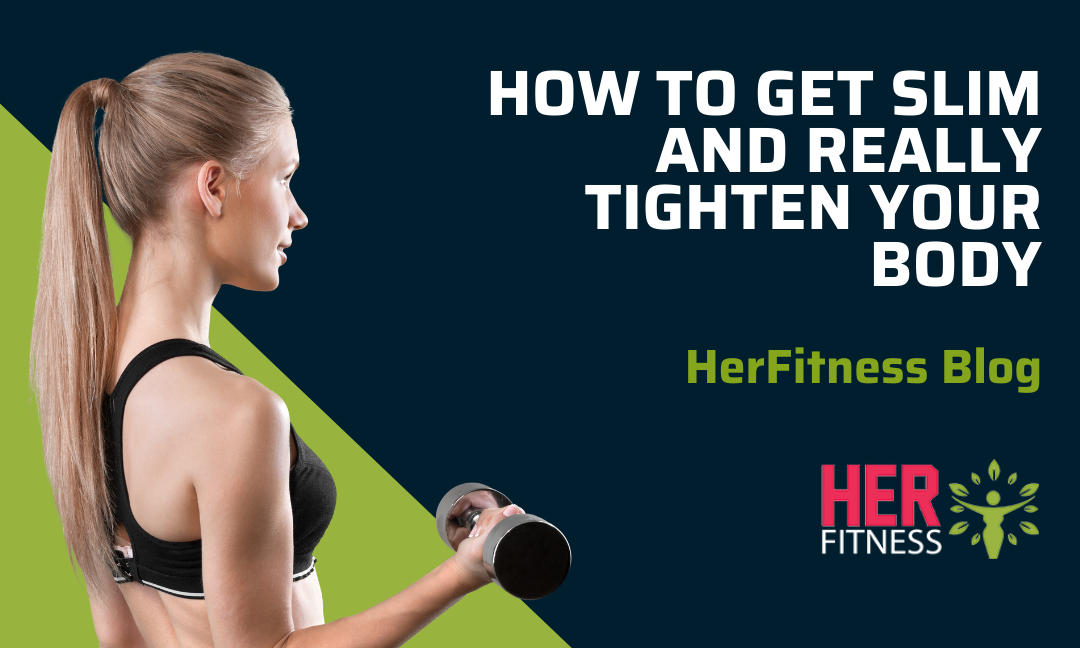The following article is for women who are tired of being fooled. With pink 1 kg dumbbells and bad diets, you will not achieve any tightening, no fat loss in certain parts of the body, and certainly not a Hollywood body. We want to show you how it really works!
It’s a realistic goal that you can achieve with a little effort and then maintain with a smart diet and exercise style.
No matter which picture you would like to recognize yourself in, all the women shown have one thing in common: They are slim & strong!
How do you achieve such a body?
1.) Be slim:
How slim you look is mostly a question of your body fat percentage. This is absolutely the most important parameter! Losing weight – and thereby reducing fat – is best done through diet. This is the most powerful lever to achieve a calorie deficit, which ultimately leads to fat loss.
Sport as a means of losing weight is completely overrated by most. Many toils to death and wonder why nothing has changed. Exercise can add to calorie consumption and has many other benefits.
Most of all, it is in the kitchen.
2.) Define / tighten / beautiful shapes = build muscles:
Get ready to erase everything from your brain that you have heard so far about toning, defining, or otherwise shaping your body.
There is only one way to achieve this – this is shown in the picture below. When built-up muscles and little body fat come together, the result is a beautiful shape of the corresponding body part.
The fear of too much muscle mass is completely unfounded . Because the ability of women to build muscle is very limited.
However, if you want to look like a skinny model, stay away from heavy weights. If you want to look similar to the images above, you need to do weight training.
This strength training must be designed according to certain principles. 25 repetitions with a mini weight do not tighten! Definition training, as it is sometimes called, is a misleading term. With high repetitions you burn a few calories, but it has no effect if you get them back in through your diet.
It is much smarter to use proper training to increase muscle size and reduce fat with a calorie deficit. This is how tightening works! (see picture below).
Eliminate myths and falsehoods
As long as you do things that actually don’t work, you waste a lot of time
e and energy. And with all the effort you get even worse results!
That is why it is so important to clear up untruths.
Myth 1: Local fat burning (“Spot Reduction”)
If this training with mini weights doesn’t do anything for toning, can I at least burn fat on my stomach, legs and buttocks? Unfortunately, no.
In all honesty: We would also like it to be possible to lose weight in certain areas on the body. Studies show that unfortunately it is not possible. 1
No matter how hard you work this part of the body – where the body builds or breaks down its fat is genetically predetermined. The “stubborn problem areas” go last (when losing weight) and come first (when gaining weight).
Typical problem areas for women are legs and buttocks. With heavy weight training and a calorie deficit, the fat disappears there too (as can be seen in the following picture by Alice).
So if you want to have less fat in one place, reduce your overall body fat percentage. Everything else is useless!
Myth 2: Weight training turns women into mountains of muscle
Many women don’t want to have thick arms, big thighs, or look too muscular overall.
You really don’t have to be afraid of that, because a woman only has 1/10 of the testosterone level of a man. The ability to build muscles is extremely limited. Muscle-packed bodybuilder women are impossible without massive use of anabolic steroids (especially testosterone).
Muscle building takes place locally. Only the muscles that are being trained grow. Conversely, this means: If a part of the body is definitely not supposed to get bigger, just don’t train that part of the body.
And to be on the safe side: If you have built up too much muscle anywhere for your taste, simply stop training for this part of the body. Building muscle is an adaptation reaction of the body. If there is no external stimulus, the adaptation also disappears. (Ever seen how small an arm or leg is after a few weeks in a cast?)
If you are satisfied with what you have achieved, you don’t need to increase your weights any further. If the stimulus stays the same, the muscle mass is only held. It will neither grow nor shrink. You can then organize the training as if you were dieting.
The fear that you would become a muscle mountain is completely inappropriate. Nobody would be afraid of being too slim on a diet. Even if you overshoot a bit (lost too much fat / built up too much muscle), it is very easy to reverse your progress (eat more / weaken and calorie deficit).
Myth 3: Stepper and cardio to shape legs and buttocks
Above you learned that shaping and tightening with little fat works with some built-up muscles.
Muscles only grow significantly when they are loaded with a weight of 50-60% of the maximum weight (1 repetition max). Stepper and cardio training are far below that. As a result, it doesn’t help you build muscle in your legs and buttocks.
You can easily spend 1 hour or more on the stepper – this is endurance training. It will burn a few calories and steppers, cardio, jogging, and swimming also make sense for this.
Just don’t succumb to the illusion that you’re doing something to build muscle. The intensity is too low for muscle building and the fat is not burned locally in the stressed areas (see myth 1 above).
Myth 4: Fat Burning Zone
In endurance training, the fat-burning zone describes an intensity (often determined by the pulse or wattage) at which the most fat is burned. The mistake is made that no distinction is made between absolute fat burning and relative fat burning.
In percentage terms, although more fat is burned in low-intensity ranges, the bottom line is that more grams of fat is burned in high-intensity ranges since more energy is consumed overall.
Example:
- For example, 30 minutes of intensive training consumes 300 kcal, of which 30% is fat. So 100 kcal fat calories.
- 30 minutes of low-intensity training consumes 150 kcal, of which 50% is fat; so 75 kcal as fat.
However, this is all of secondary importance . Because if the goal is to lose weight, by far the most important thing is how much fat is broken down after 24 hours or even better after 7 days. How the energy production in 30 min – 1 hour training is composed is irrelevant when looking at the big picture.
How to get really slim and “tone” your body
Now that we have cleared up the myths, you are certainly wondering how to proceed with the knowledge you have acquired.
Below we will show you how your diet should be designed and what type of training is right for you.
You have probably come across the statement that a “healthy and balanced” diet is the solution to all goals. Apart from the fact that it is not that easy to say what exactly it is, we recommend a more specific approach tailored to your individual situation.
Depending on how far you are from your goal, different methods make sense. Basically, the optimal way usually consists of a diet, followed by a permanent change in diet and regular exercise.
Train with heavy (!) Weights
An exercise that is done with 25 reps and low weights and hardly puts a bead of sweat on your forehead may cause a slight burning sensation in the muscle, but it will not give it the necessary growth stimulus.
Strength training why?
- Beautiful body shapes / toning
- Maintain muscles while losing weight
- Good posture
- Health reasons for weight training (osteoporosis, imbalances, insulin sensitivity, strengthening the immune system)
- Higher performance in other sports
- Improved wellbeing
- burn calories
Many train in the way described above, as it is recommended for them as definition or toning training. You won’t achieve either one or the other with it. You can achieve toning through strength training with low repetitions and high weights in combination with a low body fat percentage.
Proper strength training:
- Train in the low rep range: e.g. 5-10 repetitions.
- Choose the weight so that you can barely manage the final repetitions!
- 1-3 minute break between sets.
- Progressively increasing weights (getting stronger is by far the most important factor in building muscle).
- Train each muscle group 2-3 times a week.


Recent Comments